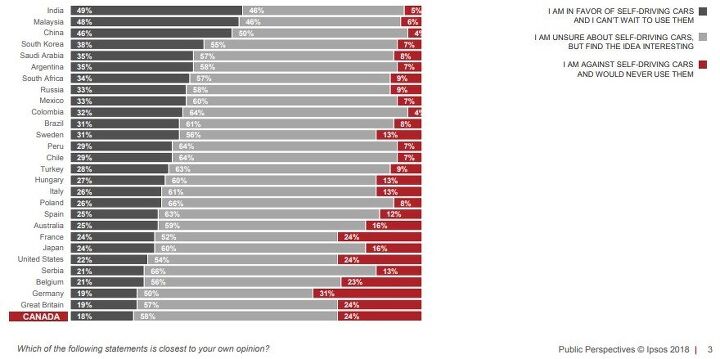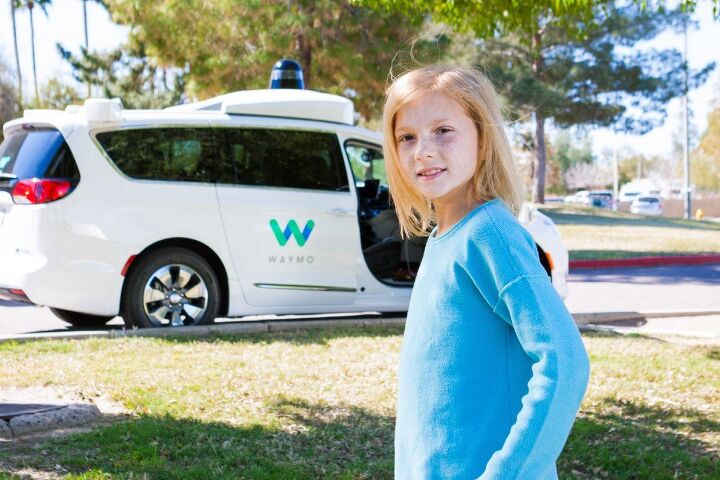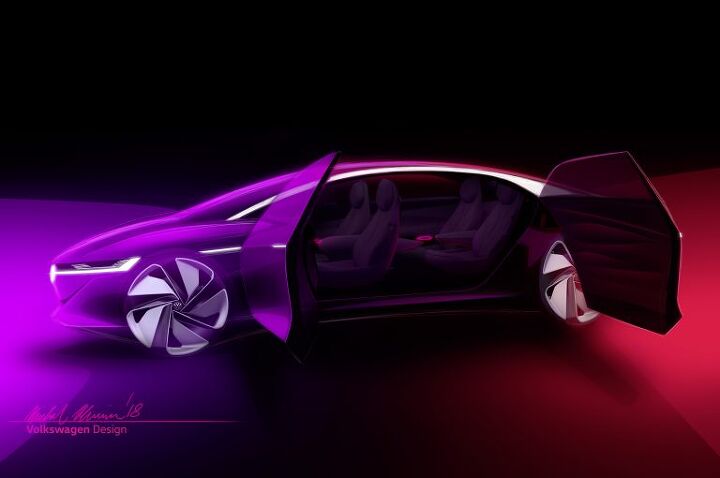#AutonomousVehicles
Tesla and NTSB Squabble Over Crash; America Tries to Figure Out How to Market 'Mobility' Responsibly
The National Transportation Safety Board, which is currently investigating last month’s fatal crash involving Tesla’s Autopilot system, has removed the electric automaker from the case after it improperly disclosed details of the investigation.
Since nothing can ever be simple, Tesla Motors claims it left the investigation voluntarily. It also accused the NTSB of violating its own rules and placing an emphasis on getting headlines, rather than promoting safety and allowing the brand to provide information to the public. Tesla said it plans to make an official complaint to Congress on the matter.
The fallout came after the automaker disclosed what the NTSB considered to be investigative information before it was vetted and confirmed by the investigative team. On March 30th, Tesla issued a release stating the driver had received several visual and one audible hands-on warning before the accident. It also outlined items it believed attributed to the brutality of the crash and appeared to attribute blame to the vehicle’s operator. The NTSB claims any release of incomplete information runs the risk of promoting speculation and incorrect assumptions about the probable cause of a crash, doing a “disservice to the investigative process and the traveling public.”
QOTD: Are These Crazy Canucks Onto Something?
A great number of us here at TTAC distrust autonomous vehicles, the predictions surrounding them, and — for reasons that become clearer with every reported mishap — most of the companies peddling this technology as a way of making our roads death- and traffic-free about 48 minutes from now. Or is it two years? These predictions come and go.
If we’ve learned anything recently, it’s that some companies place greater trust in their fledgling technology than they should, and that citizens would be right to take their forward-thinking claims with a heaping of salt.
An interesting poll just emerged from the snowy wastes of Canada, one that fills this author with a newfound trust in his countrymen countrypeople. Depending on where you live, you either can’t wait for the autonomous revolution, or you don’t trust it at all. Apparently, no country is more skeptical than Canada.
Driving Aids Allow Motorists to Tune Out, NTSB Wants Automakers to Fix It
Driving aids are touted as next-level safety tech, but they’re also a bit of a double-edged sword. While accident avoidance technology can apply the brakes before you’ve even thought of it, mitigate your following distance, and keep your car in the appropriate lane, it also lulls you into a false sense of security.
Numerous members of the our staff have experienced this first hand, including yours truly. The incident usually plays out a few minutes after testing adaptive cruise control or lane assist. Things are progressing smoothly, then someone moves into your lane and the car goes into crisis mode — causing you to ruin your undergarments. You don’t even have to be caught off guard for it to be a jarring experience, and it’s not difficult to imagine an inexperienced, inattentive, or easily panicked driver making the situation much worse.
Lane keeping also has its foibles. Confusing road markings or snowy road conditions can really throw it for a loop. But the problem is its entire existence serves to allow motorists to take a more passive role while driving. So what happens when it fails to function properly? In ideal circumstances, you endure a moderate scare before taking more direct command of your vehicle. But, in a worst case scenario, you just went off road or collided with an object at highway speeds.
The NHTSA Might Finally Get That Lead Administrator It's Been Missing
It’s been over a year since the National Highway Traffic Safety Administration had someone officially running the show. While plenty of political appointments have been held up by Senate approval, the NHTSA is one President Trump has neglected since taking office. Former General Electric executive Heidi King has been the Deputy Administrator since September, and will be the one Trump taps to assume overall leadership of the agency. It’s about time.
The NHTSA has to cope with the planned fuel efficiency changes, oversee the neverending Takata airbag recalls, and start doing some damage control with autonomous vehicle development. While the recall issues are likely to remain business as usual, the current administration has pursued lax standards for both autonomous safety and corporate efficiency rules — and both have seen growing opposition.
Entire states are already pushing back against the proposed fuel efficiency rollbacks and there have been two fatalities involving self-driving and semi-autonomous technology within the last month. Because of this, promoting King might be a wise choice. Her corporate ties have some people concerned she’ll go easy on businesses, but at least she already has some experience in dealing with the big issues.
Waymo Comments on Autopilot Crash, Blames Driver
While the investigation into Tesla’s most recent Autopilot-rated fatality continues, Waymo chimed in to remind everyone that the company’s self-driving system isn’t actually self-driving at all. That almost makes it sound like the Google offshoot is coming to the defense of Tesla Motors. However, the truth of the matter is this was a golden opportunity for Waymo to sneak in another humblebrag that its autonomous technology is the genuine article and that most of its competitors are playing catch-up.
It’s a valid point. We shouldn’t forget that Tesla’s Autopilot is not representative of true autonomy and the burden of safety still falls squarely on the driver. But the manufacturer didn’t always market it that way, and only updated the system to require hands on the wheel after the first fatality. This incident is different from the recent Uber crash in Tempe, Arizona. But just how different is debatable and largely dependent on what qualifies as “self-driving” to the average person.
“Tesla has driver-assist technology and that’s very different from our approach,” explained Waymo CEO John Krafcik last week, before Tesla revealed that Autopilot was engaged during the Model X crash. “If there’s an accident in a Tesla, the human in the driver’s seat is ultimately responsible for paying attention. We don’t know what happened here, but there was no self-driving.”
Is Uber Putting It in Reverse on Autonomous Vehicles?
Is ride-hailing company Uber backing away from self-driving cars now that one of their test vehicles was involved in a fatality?
Following the death of a pedestrian hit by one of Uber’s experimental autonomous vehicles in Tempe, Arizona, the ride sharing company suspended the testing Uber was doing with AVs on public roads in Pennsylvania, Arizona, and California in the United States and Ontario in Canada. Now comes word that Uber has informed California’s Department of Motor Vehicles that it will not be renewing its license to test autonomous vehicles on that state’s public roads. That license expires at the end of this month.
Don't Expect a Landmark Court Case From the Uber Self-driving Car Death
It had all the hallmarks of a groundbreaking case, one that might define the hazy legal boundaries that exist at the dawn of the autonomous vehicle age. Instead, a settlement.
The death, earlier this month, of 49-year-old Elaine Herzberg at the self-guided hands of an Volvo XC90 operated by Uber Technologies Inc. in a Phoenix suburb immediately sparked questions of who was at fault. The company operating the pilot project? The automaker that supplied the vehicle for conversion to autonomous drive? The suppliers of the sensors and software needed to turn the SUV into a robot? Road and light conditions? The pedestrian? Or, perhaps, the human occupant whose eyes weren’t on the road prior to impact?
Questions still swirl around why the Uber vehicle’s sensors didn’t recognize the woman crossing a darkened highway with her bicycle, but we won’t hear them answered in a courtroom.
Self-driving Company Waymo to Buy Thousands of High-end, Sporty Jaguar EVs for Taxi Service
Let’s hope future robo-taxi passengers appreciate a sport-tuned suspension and crisp driving dynamics, because there’s a slim chance they’ll notice it when shuttling around in a driverless Jaguar.
On Tuesday, Waymo, autonomous car unit of Google, announced its intent to purchase up to 20,000 Jaguar I-Pace electric crossovers for its future fleet of AV EVs. Fitted with an array of self-driving hardware and software, Waymo says the cars will hit the road in 2020. Testing begins this year, which has us wondering what kind of wait a regular I-Pace customer faces.
Arizona, Suppliers Unite Against Uber Self-driving Program
Ever since last week’s fatal accident, in which an autonomous test vehicle from Uber struck a pedestrian in Tempe, Arizona, it seems like the whole world has united against the company. While the condemnation is not undeserved, there appears to be an emphasis on casting the blame in a singular direction to ensure nobody else gets caught up in the net of outrage. But it’s important to remember that, while Uber has routinely displayed a lack of interest in pursuing safety as a priority, all autonomous tech firms are being held to the same low standards imposed by both local and federal governments.
Last week, lidar supplier Velodyne said Uber’s failure was most likely on the software end as it defended the effectiveness of its hardware. Since then, Aptiv — the supplier for the Volvo XC90’s radar and camera — claimed Uber disabled the SUV’s standard crash avoidance systems to implement its own. This was followed up by Arizona Governor Doug Ducey issuing a suspension on all autonomous testing from Uber on Monday — one week after the incident and Uber’s self-imposed suspension.
LIDAR Supplier Defends Hardware, Blames Uber for Fatal Crash [Updated]
Parts supplier Velodyne Lidar Inc. has come out against Uber Technologies following the release of video footage showing one if its autonomous test vehicles fatally striking an Arizona woman this week. Marta Thoma Hall, president of Velodyne, said she was confused as to why the autonomous SUV failed to see 49-year-old Elaine Herzberg crossing the street.
Velodyne, which supplies autonomous sensing equipment to many of the world’s automotive and tech firms (including Uber), is currently cooperating with federal investigators to determine what happened in Tempe, Arizona, on Sunday evening.
Unpacking the Autonomous Uber Fatality as Details Emerge [Updated]
Details are trickling in about the fatal incident in Tempe, Arizona, where an autonomous Uber collided with a pedestrian earlier this week. While a true assessment of the situation is ongoing, the city’s police department seems ready to absolve the company of any wrongdoing.
“The driver said it was like a flash, the person walked out in front of them,” explained Tempe police chief Sylvia Moir. “His first alert to the collision was the sound of the collision.”
This claim leaves us with more questions than answers. Research suggests autonomous driving aids lull people into complacency, dulling the senses and slowing reaction times. But most self-driving hardware, including Uber’s, uses lidar that can functionally see in pitch black conditions. Even if the driver could not see the woman crossing the street (there were streetlights), the vehicle should have picked her out clear as day.
GM Claims It Will Start Manufacturing Autonomous Cars Next Year
General Motors has announced it will begin manufacturing autonomous vehicles by 2019. Since purchasing Cruise Automation in 2016, GM has invested heavily into self-driving cars. However, its Chevrolet Bolt-based Cruise AV has only served as a testbed for the technology. That will change next year when the Orion Township assembly plant in Michigan starts building examples for commercial use.
If so, that would make General Motors the first company to sell an autonomous vehicle. However, it’s not entirely clear if that’s the ultimate goal. Thus far, GM has only said the autos will enter into a “ride-sharing environment” where the vehicles can be managed in a fleet — perhaps something akin to Uber.
Obviously, the analogy is as accurate as it is unfortunate. Uber recently suspended autonomous testing after one of its vehicles fatally struck a pedestrian earlier this week. While GM’s product planning can hardly be faulted for the goings-on at another company, the collision could see the general public wonder if production Cruise AVs are ready to take over the road.
Self-Driving Uber Vehicle Fatally Strikes Pedestrian, Company Halts Autonomous Testing
In the evening hours of March 18th, a pedestrian was fatally struck by a self-driving vehicle in Tempe, Arizona. While we all knew this was an inevitability, many expected the first casualty of progress to be later in the autonomous development timeline. The vehicle in question was owned by Uber Technologies and the company has admitted it was operating autonomously at the time of the incident.
The company has since halted all testing in the Pittsburgh, San Francisco, Toronto, and greater Phoenix areas.
If you’re wondering what happened, so is Uber. The U.S. National Transportation Safety Board (NTSB) has opened an investigation into the accident and is sending a team to Tempe. Uber says it is cooperating with authorities.
Video: Google's Waymo Exhibits the Total Lack of Excitement Inside Driverless Cars
After getting the go-ahead from Arizona, autonomous tech firm Waymo has implemented the first ride-hailing service in the country that doesn’t employ human drivers. One month after securing approval, and with no major incidents to date, the company has begun offering its autonomous taxi service to paying passengers. On Tuesday, Waymo CEO John Krafcik gave a speech at South by Southwest (the indie music festival that evolved into a media and tech bonanza) to showcase how things were getting on.
He said Waymo ditched the Phoenix test drivers and is readying its fleet of driverless Chrysler Pacificas for other parts of the country. The festival was then treated to a short video of passengers yawning. Those yawns are actually trumpets, however, heralding the introduction of autonomous vehicles in North America.
Cool It With the Names Already: From Volkswagen, a 'Vizzion' of the Future
You probably remember the old Jerry Seinfeld routine about ridiculous car names.
“Integrity? No, Inte-grah.”
In a just world, Volkswagen’s naming policy for its electric concept cars would see the company hauled before the courts on charges of crimes against the English language. However, it’s mainly a free world, and we’ll just have to grin and bear the fact that VW’s latest concept calls itself the I.D. Vizzion — surely the worst name in a line of upcoming cars that started with the I.D. and moved on to the I.D. Crozz and I.D. Buzz.
Occupants of the Vision Vizzion, should it one day become reality, won’t ever use their hands for steering, but they’ll certainly use them to talk to the car.












![LIDAR Supplier Defends Hardware, Blames Uber for Fatal Crash [Updated]](https://cdn-fastly.thetruthaboutcars.com/media/2022/06/30/8787804/lidar-supplier-defends-hardware-blames-uber-for-fatal-crash-updated.jpg?size=720x845&nocrop=1)
![Unpacking the Autonomous Uber Fatality as Details Emerge [Updated]](https://cdn-fastly.thetruthaboutcars.com/media/2022/07/19/9193994/in-wake-of-crashes-public-confidence-in-self-driving-cars-pulls-a-u-turn.jpg?size=720x845&nocrop=1)















Recent Comments